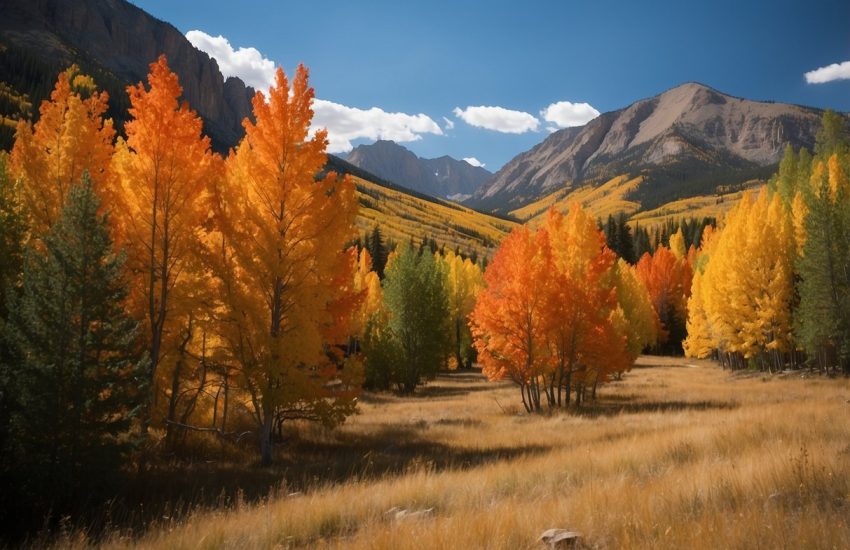Trees with Thorns in Texas: A Guide to Common Varieties and Their Characteristics
Trees with thorns are a common sight in Texas, and they play an important role in the state’s ecosystem. These trees have evolved to protect themselves from predators and harsh environmental conditions, and their thorns serve as a defense mechanism. While some people may view these trees as a nuisance, they are an essential part of Texas’ natural landscape.

One of the most well-known trees with thorns in Texas is the mesquite tree. This tree is native to the state and is often found in arid regions. The mesquite tree has long, sharp thorns that can cause significant harm to animals and humans alike. Despite their thorny exterior, mesquite trees are valued for their wood, which is used for fuel, furniture, and other products.
Another tree with thorns commonly found in Texas is the huisache tree. This tree is known for its fragrant flowers and its sharp, curved thorns. Huisache trees are often found in areas with high humidity, such as along the Gulf Coast. While some people may view huisache trees as a nuisance due to their thorns, they provide important habitat for wildlife and help prevent erosion.
Overview of Thorny Trees in Texas
Texas boasts a diverse range of thorny trees that can be found across the state. These trees play an important role in the local ecosystem, providing habitat and food for wildlife, as well as serving as a source of shade and beauty in the landscape. In this section, we will discuss the characteristics, benefits, and challenges of thorny trees in Texas.
Characteristics of Thorny Trees
Thorny trees in Texas come in various shapes and sizes, from shrubs to large trees. Many of them are evergreen or semi-evergreen, meaning they retain their leaves year-round or during most of the year. One of the most common thorny trees in Texas is the mesquite, which is known for its hard, drought-resistant wood and distinctive bark.
One of the defining features of thorny trees is, of course, their thorns. These sharp, pointed appendages can range in size from small prickles to large, formidable spikes. While thorns can be a nuisance for humans, they serve an important purpose in protecting the tree from predators and herbivores.
Benefits and Challenges
Thorny trees in Texas provide a range of benefits to the local ecosystem. They provide food and habitat for wildlife, including birds, mammals, and insects. Many thorny trees also have medicinal properties and are used in traditional medicine.
However, thorny trees can also pose challenges for humans and livestock. The sharp thorns can cause injury and damage to property, and some thorny trees can be invasive and outcompete native plants. Additionally, some thorny trees, such as the mesquite, can be harmful to livestock if consumed in large quantities.
Overall, thorny trees are an important part of the Texas landscape and ecosystem. They provide a range of benefits, but also require careful management to ensure they do not become a nuisance or pose a threat to humans or other plants and animals.
Common Thorny Trees and Shrubs
Texas is home to a variety of thorny trees and shrubs that are well-adapted to the harsh climate and soil conditions of the region. These plants have evolved thorns and spines as a defense mechanism against predators and to conserve water. In this section, we will explore some of the most common thorny trees and shrubs found in Texas.
Mesquite Trees
Mesquite trees are a common sight in Texas and are known for their thorny branches and trunks. These trees can grow up to 30 feet tall and have yellow flowers that bloom in the spring. The honey mesquite (Prosopis glandulosa) is a popular species of mesquite tree that is known for its sweet, edible bean pods. Mesquite trees are often used in landscaping and as a source of firewood.
Honey Locust Trees
Honey locust trees (Gleditsia triacanthos) are another thorny tree species found in Texas. These trees can grow up to 70 feet tall and have white flowers that bloom in the spring. The honey locust tree is named for its sweet, edible pods that resemble honey. There are also thornless cultivars of honey locust trees available for landscaping purposes.
Acacia and Other Thorny Species
Acacia trees and other thorny species are also common in Texas. The huisache (Acacia farnesiana) is a small tree or shrub with yellow flowers that bloom in the spring. This tree is known for its strong, durable wood and is often used in fence posts and furniture. Roemer’s acacia (Acacia roemeriana) is another species of acacia tree found in Texas and is known for its thorny branches and trunks.
Overall, thorny trees and shrubs are an important part of Texas’s landscape and provide many benefits to the ecosystem. While their thorns may be a nuisance to humans, they serve as a valuable defense mechanism for the plants and help them thrive in the harsh conditions of the region.
Ecological Significance and Landscaping

Thorny Trees as Wildlife Habitat
Thorny trees in Texas play a crucial role in the ecosystem by providing habitat and shelter for various wildlife species. These trees, such as the mesquite and huisache, offer dense clusters of thorns that protect animals from predators and provide a safe environment for nesting and roosting. The fragrant blooms of the huisache also attract pollinators, making it an essential food source for bees and butterflies.
Additionally, these trees offer heavy and dense shade, providing a cool and comfortable environment for animals during hot summer months. Thorny trees are also drought-tolerant and can survive in harsh conditions, making them a reliable source of food and shelter for wildlife in dry and arid regions.
Thorny Trees in Landscape Design
Thorny trees are not only beneficial for wildlife but also have practical uses in landscape design. These trees offer a unique aesthetic appeal, with their thorny branches and fragrant blooms adding texture and color to any garden. They can also be used as natural barriers, protecting property from intruders and providing privacy.
Thorny trees are also firewise, making them an ideal choice for landscaping in areas prone to wildfires. Their thorny branches and leaves are less susceptible to catching fire, reducing the risk of a fire spreading.
In addition to their practical uses, thorny trees are also salt-tolerant, making them an excellent choice for landscaping in coastal regions. They can withstand the harsh effects of salt spray and provide an attractive addition to any seaside garden.
Overall, thorny trees in Texas are an essential part of the ecosystem, providing habitat for wildlife and practical uses in landscape design. Their adaptability to harsh conditions and unique aesthetic appeal make them a valuable addition to any garden or property.
Planting and Care for Thorny Trees

Thorny trees are a great addition to any Texas landscape, providing both beauty and protection. However, planting and caring for these trees requires some extra attention. Here are some tips to help ensure your thorny trees thrive.
Selecting the Right Species
When selecting a thorny tree for your landscape, it’s important to consider the soil, sunlight, and water requirements of the species. Some thorny trees, such as the mesquite, prefer well-drained soil and full sun. Others, like the hawthorn, can tolerate a wider range of soil types and prefer partial shade.
It’s also important to consider the USDA hardiness zone of the species and ensure it is suitable for your area. Texas is home to a variety of thorny trees, including the mesquite, hawthorn, honey locust, and more.
Maintenance and Management
Once you’ve selected the right species for your landscape, proper maintenance and management is key to ensuring your thorny trees thrive. Here are some tips to keep in mind:
Protection: Young thorny trees are vulnerable to damage from animals and lawn equipment. Consider using tree guards or fencing to protect them until they are established.
Planting: When planting your thorny tree, ensure the hole is deep enough to accommodate the root ball. Backfill with soil and water thoroughly.
Pruning: Regular pruning can help maintain the shape and health of your thorny tree. Be sure to wear protective gloves and clothing when pruning to avoid injury from the thorns.
Watering: Thorny trees generally require moderate watering, but this can vary depending on the species and soil conditions. Be sure to water deeply and infrequently to encourage deep root growth.
By following these tips, you can ensure your thorny trees thrive and provide both beauty and protection to your Texas landscape.


